Identifying the Best Prices for Security Cameras


Intro
In a world where safety and security have become paramount, selecting the right security camera is essential. The necessity to vigilantly monitor residential and commercial spaces has led to an increasing demand for effective surveillance systems. However, understanding the complexities of pricing, features, and performance can be daunting.
This article will probe into the multifaceted nature of security camera pricing. It aims to highlight the essential factors that can significantly influence the cost of these devices. Moreover, it will discuss the various types of security cameras available in the market today, their specifications, and how pricing strategies enacted by manufacturers and retailers can affect purchasing decisions. IT professionals and technology enthusiasts will benefit from acquiring the necessary insights to make educated decisions tailored to their unique security needs and financial constraints.
Features Overview
Security cameras come with a variety of features that impact their overall effectiveness and price. Understanding these features is crucial to making an informed decision.
Key Specifications
- Resolution: The clarity of the footage is often determined by the camera's resolution. Higher resolutions (e.g., 1080p, 4K) offer better images but usually come at a higher price point.
- Field of View (FOV): This specification indicates how much area the camera can cover. A wider FOV typically increases the cost, as it means the camera can monitor larger spaces.
- Night Vision: Cameras equipped with infrared sensors for night vision tend to be more expensive due to the added technology.
- Storage Options: The type of storage (cloud vs. local), along with capacity, can significantly impact price. Cloud storage tends to have subscription fees.
- Wireless vs. Wired: Wireless cameras are often more expensive due to their convenience and ease of installation compared to wired models.
Unique Selling Points
When choosing a security camera, certain features might set a product apart from competitors. Look for:
- Integration with Smart Home Devices: Cameras that can seamlessly integrate with systems like Amazon Alexa or Google Home add value for tech-savvy users.
- Mobile App Access: Remote access through mobile apps is becoming a standard feature, allowing users to monitor their property from anywhere.
- Two-Way Audio: This feature allows communication through the camera, which is useful for interacting with visitors.
"Understanding the features of security cameras is essential for making strategic purchasing decisions that meet both needs and budgets."
Performance Analysis
To effectively assess security cameras, examining their performance in practical scenarios and benchmarking is necessary.
Benchmarking Results
Performance testing has shown varying results based on factors such as resolution, low-light capability, and storage efficiency. High-performing cameras have lower lag times and better image quality under all conditions. Some notable brands for benchmarking include Ring, Arlo, and Nest, each serving a different segment of the market.
Real-world Scenarios
Considerations in real-world setups can dramatically affect performance. For example:
- Home Surveillance: A typical setup may require cameras with 1080p resolution and wide FOV for covering entrances and driveways.
- Commercial Use: Larger facilities may benefit from systems that allow for multiple cameras to be monitored simultaneously, necessitating higher storage and advanced features such as analytics.
Compiling this data provides significant insights into which cameras provide the best value given their performance in diverse environments.
The comprehensive understanding of pricing, features, and performance enables buyers to navigate the security camera market more effectively, aligning technology choices with both security needs and budget constraints.
Understanding Security Camera Pricing
Understanding the pricing of security cameras is a crucial aspect for individuals and organizations looking to enhance their security measures. Security cameras, ranging from basic models to sophisticated systems, dramatically differ in their price tags. This variability stems from various elements that impact manufacturing costs and market pricing strategies.
One significant element is the quality and type of technology used in the cameras. Modern security solutions increasingly incorporate advanced technology that enhances performance but also increases cost. Another consideration is the brand reputation; well-established brands often command higher prices due to perceived reliability and service quality.
In this article, we aim to provide an informative overview of how pricing structures are formed in the security camera market. By grasping the nuances of pricing, buyers can align their security needs with their budget, ensuring they make informed purchasing decisions. Recognizing the factors that influence prices can empower buyers to identify the best value, rather than simply opting for the cheapest product available.
Market Overview
The current market for security cameras is diverse and rapidly evolving. Technology advancements and increased demand for home security solutions are driving a competitive landscape that offers a wide array of choices. As more manufacturers enter the space, customers benefit from lower prices, but complexities in features and options also arise.
Understanding the market landscape is essential for buyers who need to navigate through varying offerings. It's also important to consider geographical factors affecting availability and pricing, especially when sourcing equipment online or through regional retailers. Evaluating pricing trends can lead buyers to advantageous purchasing decisions over time.
Factors Affecting Prices
Technology Type
The technology implemented in security cameras plays a pivotal role in determining their market price. Different technology types, such as analog, digital, and smart cameras, present a varying price spectrum. Smart cameras, for example, offer features such as video analytics, remote access, and integration with smart home systems. These advanced capabilities often come at a premium. Choosing the appropriate technology type is beneficial as it directly impacts coverage and usability, making it a crucial factor in your security system's effectiveness.
Resolution and Image Quality
Resolution and overall image quality are crucial characteristics that influence security camera pricing. Higher resolution cameras, such as those offering 4K clarity, provide more detailed images, which can be invaluable in identifying individuals or objects in various lighting conditions. With the gain of clearer footage comes a higher price, as image sensors and processing capabilities require more sophisticated technology. A thoughtful consideration of resolution becomes paramount given its significant effect on overall security effectiveness and response times.
Brand Reputation
Brand reputation can heavily influence pricing strategies in the security camera market. Well-known brands, such as Arlo or Ring, tend to price their products higher due to established trust, customer service, and product support. This reputation can provide peace of mind, especially for users who prioritize reliability. However, recognizing whether this added cost corresponds to actual benefits is key, as some lesser-known brands may offer comparable features at reduced prices.
Additional Features
Additional features can greatly affect the cost and attractiveness of security cameras. Options such as two-way audio, cloud storage, and intelligent alerts can add value to products, influencing their market price. However, not all consumers may need these advanced functionalities, which means considering what features align most closely with their security needs is essential. Differentiating between must-have and nice-to-have features can help in making a more economical and satisfying purchase.
Types of Security Cameras
Understanding the types of security cameras is crucial for any individual or organization planning to enhance their security framework. Different environments and security needs demand specialized solutions. Each type of camera has distinct features, utility, and pricing structures, which can significantly influence purchasing decisions. By knowing these differences, you can make more informed decisions that optimize your investment in security technology.
Wired vs. Wireless Cameras
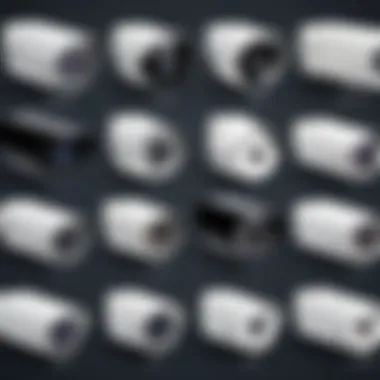
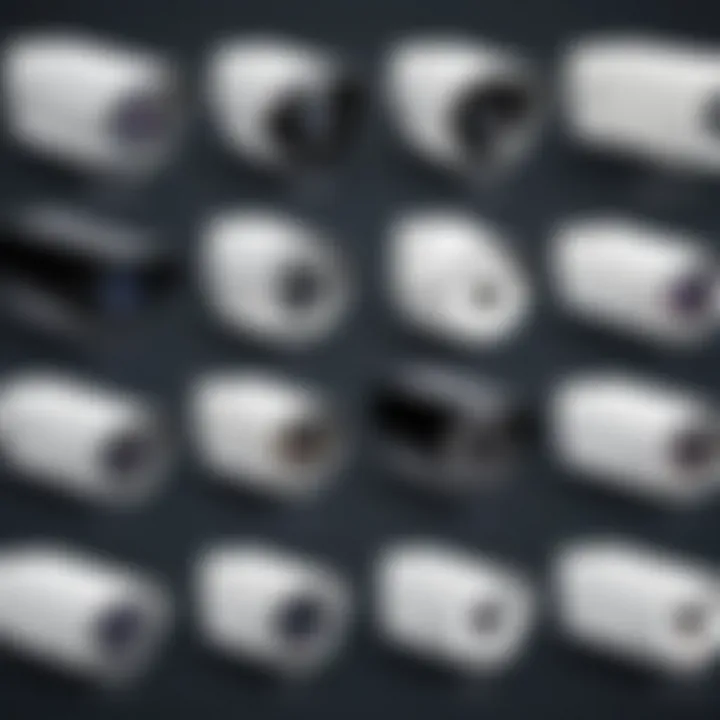
Wired and wireless security cameras each offer unique advantages and drawbacks. Wired cameras tend to provide more stable connections and consistent power supply. They are often favored for permanent installations where interference and distance from the main power source are critical considerations. However, installation can be complex and sometimes costly due to the need for cabling.
On the other hand, wireless cameras provide flexibility in installation and ease of setup. They can be placed in locations without the need for drilling or running cables, making them ideal for temporary setups or hard-to-reach areas. Nevertheless, there can be issues related to signal strength and potential interference from other devices, affecting the reliability of the feed. In summary, choosing between wired and wireless cameras depends greatly on the specific installation environment and security needs.
Indoor vs. Outdoor Cameras
The distinction between indoor and outdoor security cameras is essential when assessing security requirements. Indoor cameras are generally designed for smaller mounting locations and often come with features like two-way audio and remote access. They serve well in monitoring spaces like homes, offices, or retail environments.
Outdoor cameras, however, need to meet more stringent criteria for durability and protection from elements. They often come with features like weatherproof housing, enhanced night vision, and motion detection capabilities. The variability in costs depends significantly on the intended setting and the durability needed for outdoor use, making it a pivotal consideration in pricing.
Specialized Cameras
Specialized cameras cater to niche requirements within the broader security landscape. Each type has inherent features that make them suitable for specific activities or environments. Here are a few subcategories:
PTZ Cameras
PTZ cameras, or Pan-Tilt-Zoom cameras, offer a unique capability to manipulate the camera's position and zoom in on specific areas. This functionality allows operators to track movement over large spaces effectively. The key characteristic of PTZ cameras is their mechanical mobility, which can cover a wider field compared to fixed cameras. This flexibility makes them a popular choice for venues that need extensive area surveillance, such as parking lots or large retail stores.
However, they do come with a higher price point and may require additional setup considerations, such as ensuring stable power sources and network connectivity.
IP Cameras
IP cameras use internet protocol to send and receive data, making them comparatively modern solutions in security. They have the ability to deliver high-resolution video and can be accessed remotely over a network, often allowing for seamless integration with alarm and monitoring systems. Their primary selling point is their adaptability to various security needs and the option for cloud-based storage. While they offer significant advantages, including great image quality and real-time streaming, they are also generally more expensive and depend on a reliable internet connection.
Thermal Cameras
Thermal cameras detect heat emitted by objects, making them effective in low-visibility conditions. They excel in scenarios such as nighttime surveillance or in environments with obstacles that obstruct traditional cameras. The main advantage is their ability to detect intrusions even in total darkness. However, they can have a steeper learning curve in terms of interpretation of thermal images. The specialist nature of their application often comes at a higher cost compared to standard cameras, making them more suitable for specific security operations.
The choice of camera type informs not only the performance of a security system but also the overall cost, thus requiring careful consideration of each type's unique attributes.
Evaluating Security Camera Features
Evaluating security camera features is essential for anyone looking to buy a security camera. This section delves into the specific elements that define how effective a security camera will be in your context. Understanding these features can help in making informed decisions, ensuring that the camera chosen meets the required security needs without overspending.
Resolution and Image Clarity
Resolution plays a critical role in the clarity of video footage. Higher resolution means sharper images, which can make a significant difference in identifying faces or license plates.
HD vs. 4K Resolution
HD resolution cameras offer a decent level of detail. They usually provide clear images for most general applications. However, 4K resolution cameras provide four times the detail of HD cameras. This high definition makes them particularly suitable for environments where detail is crucial. The ability to zoom in on footage without losing clarity is a tremendous advantage of 4K cameras, making them a more beneficial choice for high-security areas.
Advantages of 4K Cameras:
- Enhanced image detail
- Better forensic capabilities
Disadvantages:
- Higher storage requirements
- Increased cost
Night Vision Capability
Night vision capability enhances the performance of security cameras in low-light conditions. Cameras equipped with infrared sensors can capture footage even in complete darkness. This feature is often crucial for outdoor installations where light may be scarce during certain times of the day.
Key Advantages:
- Continuous surveillance regardless of light conditions
- Increase in overall effectiveness of security measures
Disadvantages:
- Limited range of visibility compared to daytime
- May require additional maintenance
Field of View
Field of view (FOV) is another vital characteristic of security cameras. A wider field of view allows a single camera to cover a more extensive area, reducing the number of cameras needed for comprehensive coverage. Wider angles provide a broader image but can sometimes distort the edges. This trade-off warrants consideration during camera selection.
Storage Options
Storage solutions are critical in managing recorded footage. There are two main types: cloud storage and local storage solutions. Each has its benefits and potential drawbacks that can affect overall system performance and accessibility.
Cloud Storage
Cloud storage allows footage to be saved online. This means that it can be accessed from anywhere with an internet connection. One of its key characteristics is scalability; storage can be increased as needs change.
Benefits of Cloud Storage:
- Remote access to footage
- Automatic backups, preventing data loss
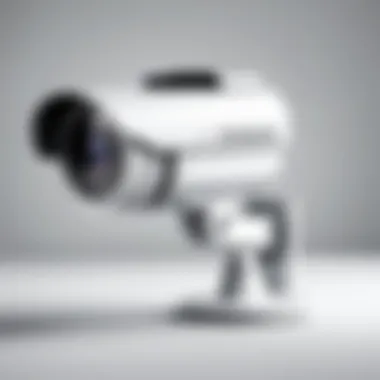

Drawbacks:
- Monthly fees may apply
- Dependence on internet connectivity
Local Storage Solutions
Local storage solutions involve saving recordings on physical devices, such as hard drives or network video recorders (NVRs). This method ensures that data remains on-site, which can be beneficial for privacy reasons.
Advantages of Local Storage:
- No ongoing subscription costs
- Better control over data security
Disadvantages:
- Requires physical maintenance
- Limited accessibility if something happens to the local setup
Understanding these features can significantly impact your final decision when selecting a security camera. A holistic view of resolution, night vision capability, field of view, and storage options will guide you towards the best value for your investment.
Comparative Pricing Analysis
In the domain of security cameras, understanding pricing is crucial for making informed decisions. Comparative Pricing Analysis serves several essential functions. It elucidates the pricing landscape, allowing consumers to recognize the variations across different models and brands. Additionally, it aids in distinguishing budget-friendly options from premium solutions. Crucially, this analysis provides insights into the value proposition of each camera by linking features to price points, thus ensuring that buyers make choices aligned with their needs.
Budget Options
For those looking to purchase security cameras without hefty expenses, budget options present a compelling selection. Generally, these cameras range from $50 to $150. Although basic, many entry-level models offer decent image quality, motion detection, and cloud storage. Typically, brands like Wyze and Blink provide cameras suitable for homeowners who prioritize affordability over extensive features.
Characteristics of budget options include:
- Basic Features: Many entry-level cameras come with standard resolution, usually 720p or 1080p.
- Limited Advanced Options: High-end features like 4K video or pan-tilt-zoom functionalities are often absent.
- User-Friendliness: Designed for simple installation, often requiring minimal technical know-how.
While these budget cameras are adequate for basic surveillance, they may lack durability or extensive customer support compared to more expensive alternatives.
Mid-Range Cameras
Mid-range security cameras typically fall within the $150 to $500 price bracket. These products offer a blend of affordability and enhanced capabilities. Brands such as Ring and Arlo stand out in this category, providing models with better resolution, advanced motion detection, and audio features.
Key benefits of mid-range options include:
- Higher Image Quality: Many offer 1080p or even 4K resolution.
- Improved Features: Support for night vision, two-way audio, and customizable alerts.
- Greater Reliability: Constructed with more durable materials, ensuring longevity.
These mid-range cameras cater to consumers who seek a balance between cost and functionality, making them suitable for both residential and small business needs.
High-End Security Solutions
For those requiring top-tier capabilities, high-end security solutions command prices typically exceeding $500. These cameras feature sophisticated technology designed for comprehensive surveillance needs. Brands like Nest and Panasonic lead in this niche, delivering products with cutting-edge specifications.
Attributes of high-end security cameras include:
- Exceptional Image Clarity: Offering 4K resolution, providing detailed visual data.
- Advanced Analytics: Some include AI features, enabling facial recognition and smart alerts.
- Durability and Versatility: Often designed for extreme weather conditions, suitable for any environment.
Investing in high-end solutions proves beneficial for businesses or homeowners who require robust security systems with extensive functionalities and reliability.
"Quality surveillance demands appropriate investment. Choosing the right tier correlates with actual security needs."
This pricing analysis illustrates that a spectrum exists among security cameras, each catering to different budgets and requirements. Understanding the distinctions helps guide long-term investment in security technology.
Where to Buy Security Cameras
Choosing the right place to buy security cameras is important due to its impact on prices, quality, and warranty considerations. It is critical to evaluate various purchasing channels before making any decisions. Each option presents unique benefits and potential drawbacks, making it necessary to base your choice on your individual needs, budget constraints, and preferences.
Retail Stores vs. Online Platforms
Retail stores allow for immediate purchase and the option to physically inspect the security cameras. This direct interaction with the products can be reassuring for many buyers. It also provides opportunities to ask staff for recommendations and get insights into various models. However, in-store prices may be higher due to overhead costs.
On the other hand, online platforms typically offer more competitive pricing and a broader selection. Websites like Amazon or Newegg often feature customer reviews, which can provide valuable insights into product performance. Additionally, online shopping enables easy price comparisons across brands. Nevertheless, buyers must consider shipping fees and wait times for delivery.
Manufacturer Websites
Purchasing security cameras directly from manufacturer websites can be a advantageous move. This option usually ensures authenticity and access to the latest models. Many manufacturers often offer exclusive deals, rebates, or bundles only available through their sites.
A potential drawback is the possibly limited selection, as certain retailers might carry more diverse products. Manufacturer websites are also prone to stock shortages during popular sales events. Hence, you need to check frequently for availability. Overall, buying directly from the manufacturer can provide buyers with excellent value for their investment.
Dealers and Resellers
Dealers and resellers also present a viable option for purchasing security cameras. These businesses often specialize in specific brands and provide tailored advice and support. Some may offer used or refurbished models at lower prices. This path can be advantageous for those looking for cost-effective options or specific products that may not be readily available through mainstream vendors.
However, not all dealers provide the same level of customer service or warranty support. It's crucial to research their reputation and ensure they offer reliable products. Additionally, verify if they grant any type of warranty or return policy, as this can affect your long-term satisfaction with the purchase.
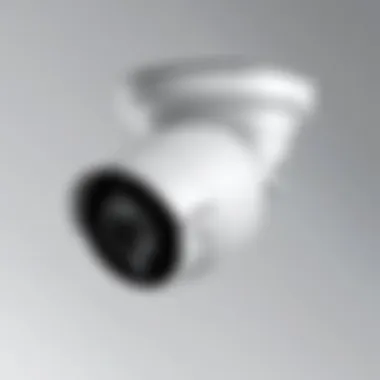
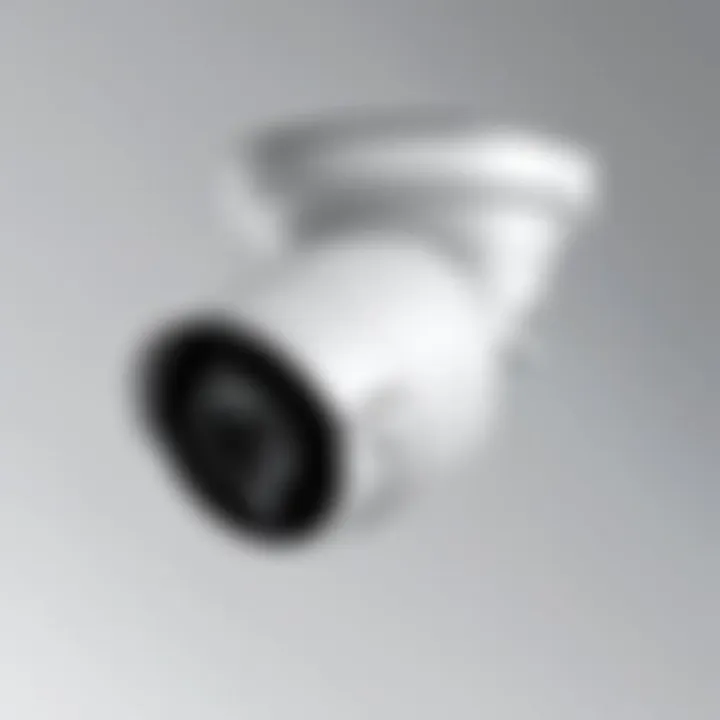
Reliable sources and thorough research can significantly enhance your purchasing experience and lead to wiser buying decisions.
Each of these purchasing options comes with its pros and cons. Being informed about where to buy security cameras can help ensure that you find the best deal without compromising on quality or service. Ultimately, deciding the best route requires careful consideration of your preferences and the specific features you need.
Deals and Discounts
Deals and discounts play a crucial role in the overall pricing strategy for security cameras. Understanding how and when to take advantage of these savings can ultimately help consumers stretch their budgets while still obtaining high-quality equipment. As prices can vary significantly across different retailers and throughout the year, being informed about promotions can shift a camera choice from merely adequate to genuinely effective within one's financial plan.
Identifying Seasonal Sales
Seasonal sales are a prime opportunity for buyers looking to save money on security cameras. Retailers often align discounts with major shopping events like Black Friday, Cyber Monday, and back-to-school seasons. These periods may see prices slashed on various models, making them popular among consumers.
To capitalize on these seasonal sales, potential buyers should:
- Subscribe to Retailer Newsletters: This ensures they receive timely notifications about upcoming promotions.
- Set Price Alerts: Many online platforms allow users to set alerts for specific products, notifying them when prices drop.
- Research Past Sale Trends: Knowing when to expect discounts can help customers budget for significant purchases.
Working with Coupons
Coupons can further enhance savings on security camera purchases. They are often available from several sources, including manufacturer websites, retailer promotions, and third-party coupon sites. However, the challenge lies in finding reliable and effective coupons.
Here are some strategies for using coupons effectively:
- Combine Coupons with Sales: Using a coupon on a product already on sale can lead to substantial savings.
- Check Expiration Dates: Always ensure that coupons are still valid before attempting to use them.
- Understand Store Policies: Some retailers have specific policies regarding the use of coupons, which may include limitations on which items qualify.
By leveraging coupons effectively, buyers can make their security purchases more economical, achieving value without sacrificing quality.
Bulk Purchase Discounts
Bulk purchase discounts are another avenue to explore for savvy shoppers looking to acquire multiple security cameras for broader installations. Many retailers offer reduced pricing when multiple units are purchased simultaneously. Organizations, businesses, or even large households may find this particularly beneficial.
Buyers should consider:
- Inquiring Directly with Retailers: Some retailers may not advertise bulk discounts but offer them upon request.
- Group Purchases: Collaborating with neighbors or community members can help achieve bulk pricing benefits.
- Manufacturer Discounts: Certain brands offer bulk purchasing programs or incentives directly through their websites.
Employing bulk purchase strategies can be economically advantageous for those looking to enhance security with multiple cameras at once.
"Understanding deals and discounts can significantly impact the total cost of ownership related to security cameras."
By embracing these strategies, potential buyers not only equip themselves with better tools for making purchases but also engage thoughtfully with the market. This approach secures essential security solutions that align with both their needs and budget.
Installation and Maintenance Costs
Understanding the installation and maintenance costs associated with security cameras is crucial for any potential buyer. These costs can be as significant as the cameras themselves, affecting the overall budget and decision-making process.
When considering installation, buyers must account for both time and labor. DIY installation may be tempting because of the potential to save costs. However, improper setup can lead to insufficient coverage, failed detection, and the device failing to perform as intended. Professional installation services, while more expensive, ensure that the system is set up correctly. This often includes calibrating cameras for optimal performance and connecting to existing security systems.
Maintenance costs also should not be overlooked. Regular upkeep can extend the lifespan of the cameras and improve their functionality. This includes software updates, cleaning camera lenses, and checking for hardware malfunctions. In addition, many systems require periodic battery replacements or other hardware servicing, which can add to the expenses over time.
Thus, understanding these installation and maintenance costs is vital for aligning technological capabilities with budget constraints, ensuring that buyers make informed choices.
DIY Installation
Opting for DIY installation can initially appear as a cost-effective solution. Modern security cameras often come with easy-to-follow guides and user-friendly apps for setup and monitoring.
Key benefits include:
- Cost Savings: Elimination of labor fees.
- Flexibility: The ability to install at your convenience without scheduling.
- Satisfaction: A personal touch in customizing the setup according to your needs.
However, the DIY approach carries certain risks. It requires a basic understanding of technology and may involve troubleshooting if things do not go as planned. Some cameras, for instance, depend heavily on home Wi-Fi stability, which can also complicate installation if the signal is weak in certain areas. Depending on the complexity of the chosen system, it may lead to additional costs spent on tools or accessories necessary to complete installation.
Professional Installation Services
While professional installation services come with a higher upfront price, they greatly reduce stress and ensure your security system works as it should.
Advantages of professional installation include:
- Expert Knowledge: Skilled technicians understand the subtleties of camera placement and connectivity.
- Enhanced Performance: Properly installed cameras can yield better coverage and image quality.
- Time Efficiency: Professionals complete installation quickly, allowing you to focus on other tasks.
Potential drawbacks might include the cost, and the inability to customize certain features post-installation. However, when considering the long-term value—potentially even safeguarding prized possessions—the investment often proves worthwhile.
Ultimately, whether choosing DIY installation or professional services, clarity on installation and maintenance costs profoundly influences the purchasing process.
End and Recommendations
In evaluating the best prices for security cameras, understanding the nuances of the market is pivotal. This article has dissected various pricing factors, types of cameras, and their features. The insights amassed here can guide IT professionals and technology enthusiasts in making informed choices that balance their security needs with budgetary constraints.
Importance of Finale and Recommendations
The conclusion synthesizes key elements drawn from our comprehensive analysis. By reiterating the critical factors that affect pricing, we empower readers to grasp the implications of their purchases. Security cameras are not merely a transaction but a long-term investment in safety and surveillance.
Key Recommendations
- Assess Needs: Before purchasing, clearly define the specific security requirements. The type of environment plays a crucial role in determining the best fit. For example, outdoor cameras require different specifications compared to those intended for indoor use.
- Compare Thoroughly: Utilize multiple platforms to compare prices. This includes both physical and online stores. Market dynamics can vary significantly between vendors. It's beneficial to note that sometimes, seasonal variations can bring significant discounts.
- Opt for Reputable Brands: While dealing with budget constraints is essential, compromising on quality can lead to inadequate security. Consider reputable brands known for their durability and reliability.
- Consider Total Cost of Ownership: While examining prices, take into account installation and maintenance costs. DIY options might save money upfront, but professional installation may provide assurance of proper setup.
- Stay Informed About Deals: Keep an eye on seasonal sales or promotions as well as the use of coupons that can minimize the costs further. Signing up for newsletters from manufacturers or dealers can be advantageous in this regard.
- Leverage Expert Reviews: Seek reviews from IT professionals and tech communities. Platforms like Reddit or specialized forums offer real-user experiences that can guide decisions based on actual performance rather than just specifications or marketing materials.
"The best camera is not just defined by its price, but by its ability to serve your specific security needs effectively."



